There’s nothing like a drift of upright prairie coneflower (
Ratibida columnifera), or Mexican hat, planted in a sea of grasses or in a more naturalistic garden border. The foliage is somewhat feathery, the petals are bright and rich, and the seed heads stun in an autumn or winter palette. This plant is perfect for hot, dry areas, and it competes well with aggressive plants you don’t want around.
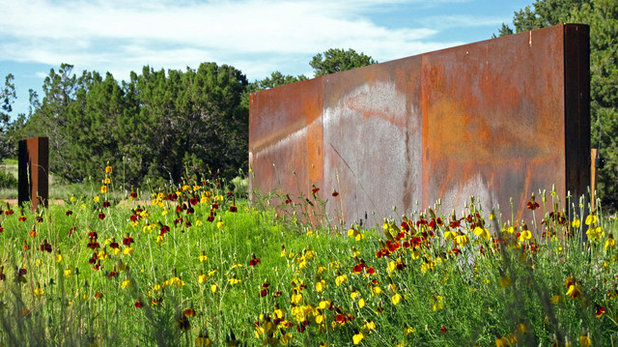
Surroundings Studio
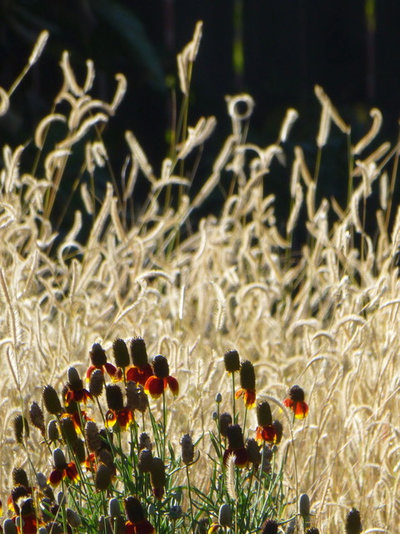
Waterwise Landscapes Incorporated
Botanical name: Ratibida columniferaCommon names: Upright prairie coneflower, long-headed coneflower, prairie coneflower, Mexican hat
Origin: Native primarily to the Great Plains from western Minnesota south to Arkansas and eastern Texas, west to Montana in the north and Arizona in the south; it is naturalized in California, as well as in areas in several states east of the Mississippi River
Where it will grow: Hardy to minus 40 degrees Fahrenheit, or minus 40 degrees Celsius (USDA zones 3 to 9; find your zone); part of the tallgrass, mixed grass and shortgrass prairie eco-regions
Water requirement: No supplemental water needed once established, which happens fairly quickly; prefers dry to medium soil
Light requirement: Full sun
Mature size: 1 foot to 3 feet tall and 1 foot to 2 feet wide
Benefits and tolerances: Adaptable and resilient prairie native; can grow in a variety of soil conditions; attracts wildlife; competes well against similar-size plants that may be invasive or less desirable
Seasonal interest: Long bloom time from early to midsummer through fall
When to plant: Plant potted or bare-root plants in spring to midfall; sow seeds in late fall through midwinter (seeds need 30 days of cold, wet conditions to germinate).
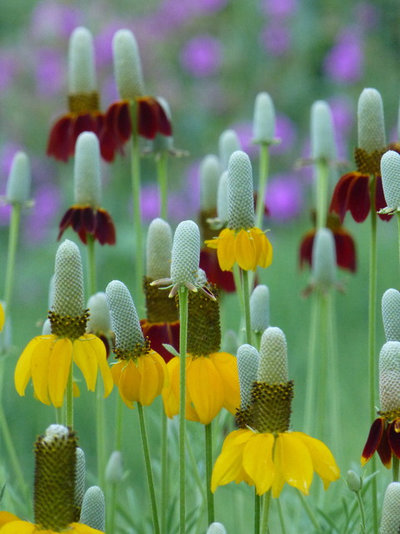
Waterwise Landscapes Incorporated
Distinguishing traits. Mexican hat is another common name for upright prairie coneflower because of the fanciful display of its petals — which can be either yellow or red — as well as the unique long, columnar head. The tall column sports bright yellow pollen that emerges from bottom to top over a week or two, and the petals can stay on the flower head a good while after pollination is complete. It has lacy, deep-lobed leaves.
This prairie native is highly prized for its accessible pollen, which supports a diversity of insects. In winter, wildlife will eat its seeds.
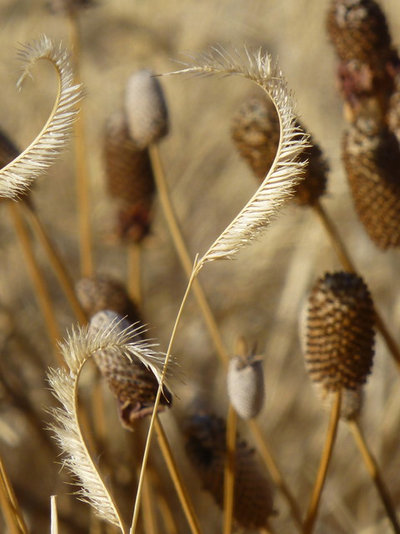
Waterwise Landscapes Incorporated
How to use it. Upright prairie coneflower grows aggressively and can outcompete shorter plants if given the chance, although taller plants keep it in check and it is not a long-lived perennial (a few years is typical). In open ground it will self-sow readily.
When planting, place it among taller grasses and perennials to help limit its spread, or let it colonize a troublesome area where not much else will thrive or where you need an invasive species thinned out. A thick matrix planting of complementary shortgrasses will shade the soil, limiting seedling rates while acting as a living green mulch that also inhibits weeds.
The tall shaft of seeds looks stunning in autumn against shortgrasses like little bluestem (
Schizachyrium scoparium) and sideoats grama (
Bouteloua curtipendula, shown here), as well as with many native sedges (
Carex spp.).
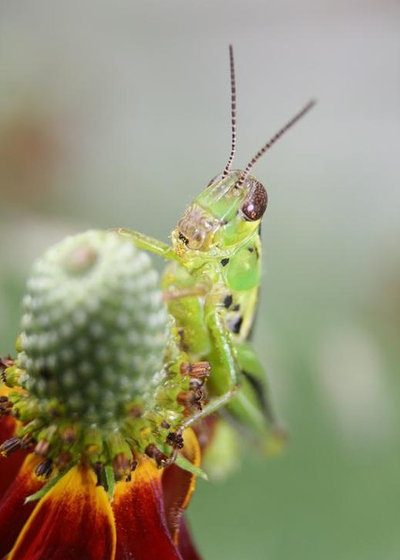
Benjamin Vogt / Monarch Gardens
Planting notes. This is a very beneficial and adaptable plant, thriving in hot, sunny, dry conditions from sand to gravel to clay. It will also do well in medium-moisture soils but may be outcompeted in wetter soils by taller plants that shade it.
Potted plants from the nursery can go into the ground anytime from spring through fall. Seeding is also an effective way to grow upright prairie coneflower, as even first-year plants will begin sporting some blooms, with the second year bringing a full flush that lasts all summer into autumn. Seeds need 30 days of winter conditions, or cold stratification, to germinate and will self-sow easily in open soil areas where competition is minimal.





